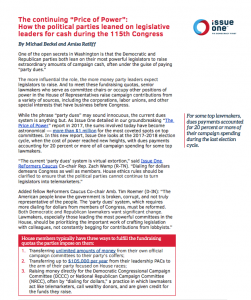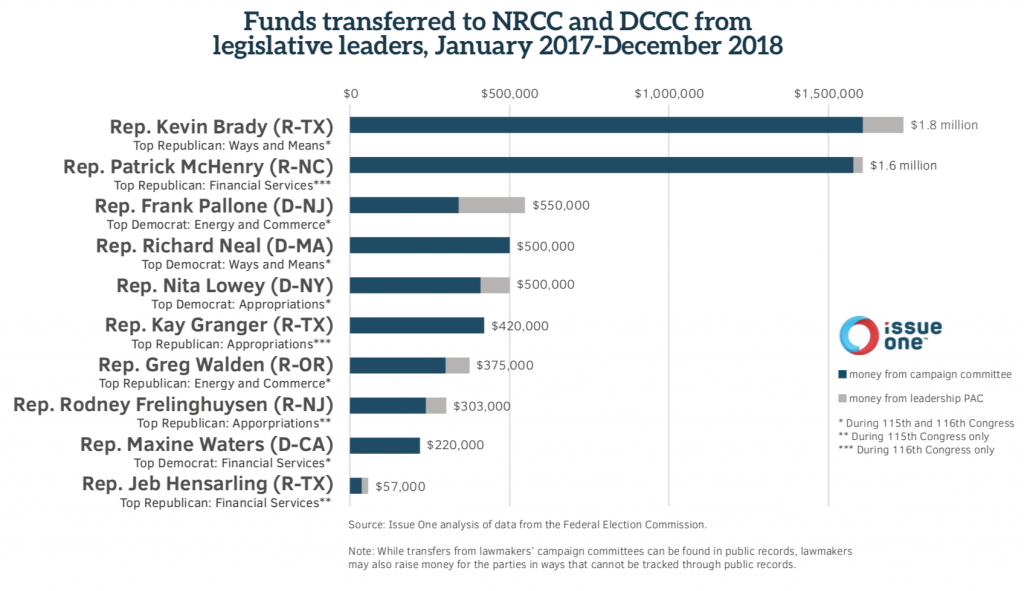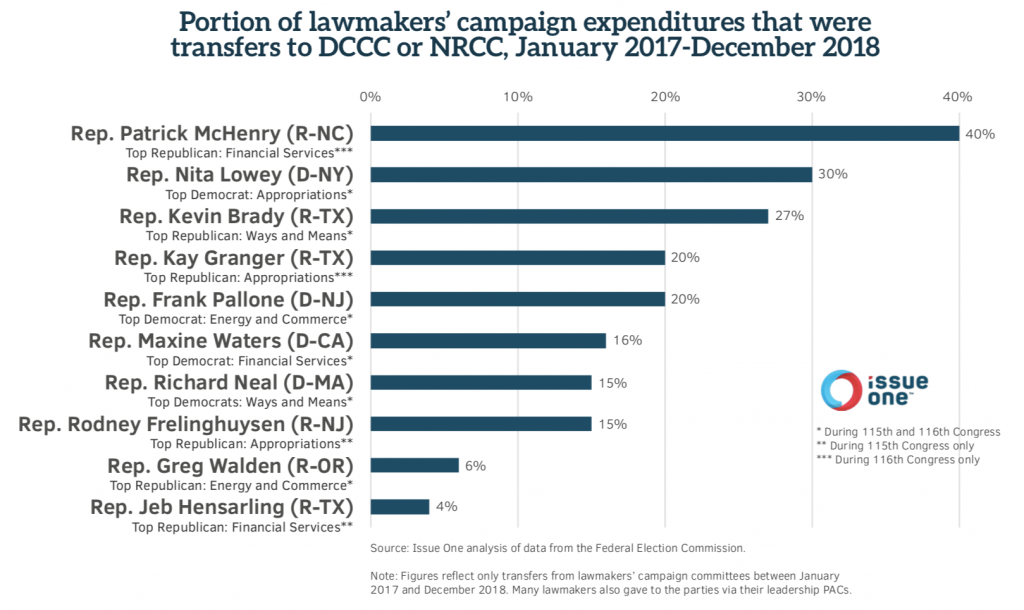One of the open secrets in Washington is that the Democratic and Republican parties both lean on their most powerful legislators to raise extraordinary amounts of campaign cash, often under the guise of paying “party dues.”

Click for a PDF version of the report.
The more influential the role, the more money party leaders expect legislators to raise. And to meet these fundraising quotas, senior lawmakers who serve as committee chairs or occupy other positions of power in the House of Representatives raise campaign contributions from a variety of sources, including the corporations, labor unions, and other special interests that have business before Congress.
While the phrase “party dues” may sound innocuous, the current dues system is anything but. As Issue One detailed in our groundbreaking “The Price of Power” report in 2017, the sums involved today have become astronomical — more than $1 million for the most coveted spots on top committees. In this new report, Issue One looks at the 2017-2018 election cycle, when the cost of power reached new heights, with dues payments accounting for 20 percent or more of all campaign spending for some top lawmakers.
“The current ‘party dues’ system is virtual extortion,” said Issue One ReFormers Caucus Co-chair Rep. Zach Wamp (R-TN). “Dialing for dollars demeans Congress as well as members. House ethics rules should be clarified to ensure that the political parties cannot continue to turn legislators into telemarketers.”
Added fellow ReFormers Caucus Co-chair Amb. Tim Roemer (D-IN): “The American people know the government is broken, corrupt, and not truly representative of the people. The ‘party dues’ system, which requires more dialing for dollars from members of Congress, must be reformed. Both Democratic and Republican lawmakers want significant change. Lawmakers, especially those leading the most powerful committees in the House, should be prioritizing the important work of crafting legislation with colleagues, not constantly begging for contributions from lobbyists.”
House members typically have three ways to fulfill the fundraising quotas the parties impose on them:
- Transferring unlimited amounts of money from their own official campaign committees to their party’s coffers;
- Transferring up to $105,000 per year from their leadership PACs to the arm of their party focused on House races;
- Raising money directly for the Democratic Congressional Campaign Committee (DCCC) or National Republican Campaign Committee (NRCC), often by “dialing for dollars,” a practice in which lawmakers act like telemarketers, call wealthy donors, and are given credit for the funds they raise.
Only the first two ways — contributions from lawmakers’ campaign committees and leadership PACs — can be tracked. There are no public records that detail how much money politicians are credited for when raising funds directly for the DCCC and NRCC, although Issue One believes all dues information should be publicly disclosed.
To examine the extent to which senior lawmakers raised money for the DCCC and NRCC during the 115th Congress before control of the House changed hands, Issue One reviewed recently filed campaign finance disclosures.
Issue One’s analysis found that the top Democrats on several of the most powerful congressional committees each transferred at least $500,000 from their campaign committees and/or leadership PACs to the DCCC between January 2017 and December 2018, even when in the minority:









